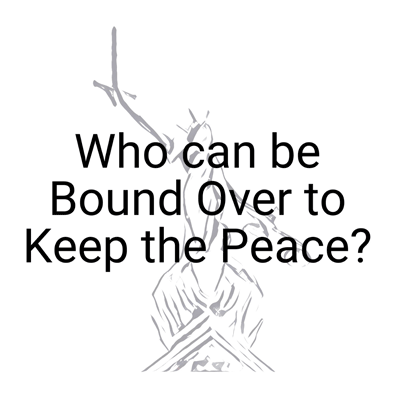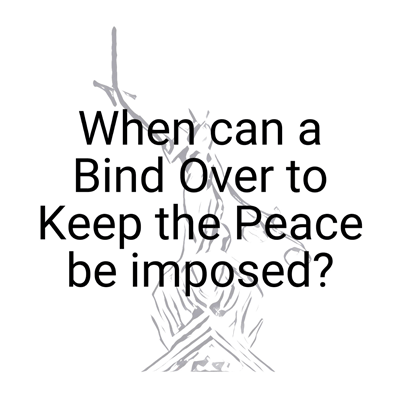Binding Over to Keep the Peace or to Come Up for Judgment
All Contents > Sentencing Home > Pleading Guilty > Magistrates’ Court Trial > Crown Court Trial > How Sentencing Works > My Sentencing Hearing > Bind Overs
“The most common type of ‘bind over’ is a Bind Over to Keep the Peace. It is intended to keep a person out of trouble, failing which which they will be required to pay a specified sum of money. ”
On this page:
Bind Over to Keep the Peace
Who can be bound over to keep the peace?
When can a bind over be imposed?
Bind Over case example
Is a Bind Over a conviction?
What are the alternatives to a bind over?
Bind Over to Come Up for Judgment
Breach of a Bind Over
Further Information on Bind Overs
Bind Over to Keep the Peace
The most common type of ‘bind over’ is a Bind Over to Keep the Peace. It is intended to keep a person out of trouble, failing which they will be required to pay a specified sum of money.
The order can be made by both the magistrates’ court and the Crown Court and requires the person it is made against not to engage in specific conduct or activities (e.g. unlawful violent conduct in licensed premises) for a certain period of time (usually no more than 12 months), in breach of which they will be required to pay (or forfeit) the sum specified by the court.
Who can be bound over to keep the peace?
The order can be made against a defendant upon conviction or acquittal, or against a witness who has given evidence in a case.
When imposed upon conviction, it is used as an alternative to sentence. When used upon acquittal or against a witness, it is a freestanding order.

















